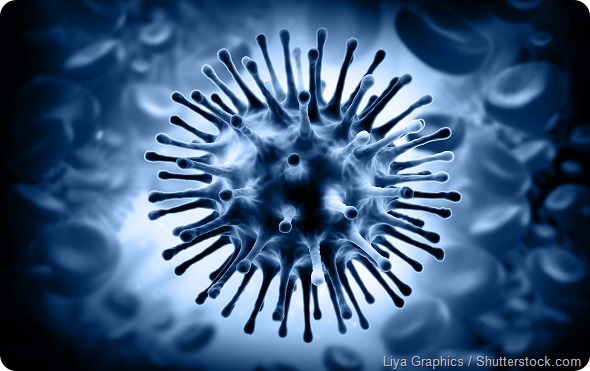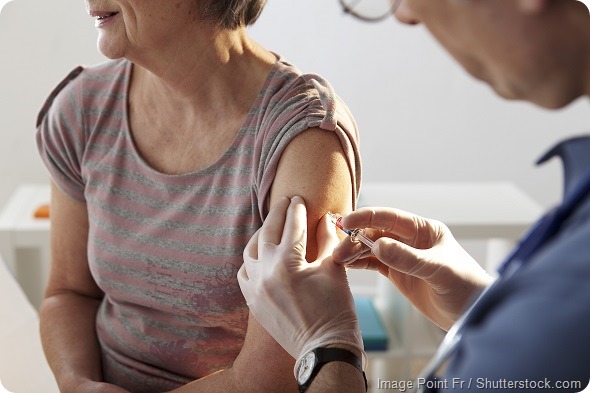
How does the flu vaccine work?
There are different formulations of the flu vaccine but in general they all do the same thing, which is to stimulate our body's immune system to recognize and fight against the influenza virus.
The injectable kinds of flu vaccine usually present a piece that mimics the flu virus. That basically teaches our immune system to recognize the virus when it enters the body and to be prepared to fight off an infection.
There are also nasal formulations of the flu vaccine. Those work in a similar way but they activate a different part of the immune system that is always active in our mucous membranes like the lining of our nose, and mouth, and throat to really be our first line of defense against viruses like influenza.

How long does it take to develop antibodies against influenza after you’ve received the vaccine?
Generally, it takes between 10 to 14 days before we would expect for the immune response to be fully in force after a vaccine. We generally start vaccinating a month or so before we expect the first virus to start circulating so that people will have a chance to be vaccinated and have that 10 to 14 day run-up where their immune system will respond to vaccine.
Why is there a new flu vaccine each year?
The flu, like many viruses, has the ability to change quite rapidly. Although each year the strains may be largely similar to the prior year, they change in subtle ways. It's just enough that they can evade our immune system.
So far, we have to vaccinate people every year to make sure that we're matching the strains as closely as possible. Some years, we have a complete shift in the strain of influenza, and that's an even bigger change in the virus. Unfortunately, each year, there are subtle changes that mean that we have to re-vaccinate everyone.

How is the vaccine designed?
The vaccine is designed based on predictions, by looking at the current circulating virus. These respiratory viruses tend to circulate in the winter months. , the viruses that are circulating the southern hemisphere will be collected and analyzed to understand what strains are circulating. Then predictions are made and the vaccine is designed and made for the northern hemisphere and vice versa.
Those circulating strains are informing the selection of the vaccine design for the next flu season that's coming. That's why sometimes predictions are right and sometimes they're not. We do have a variable match or mismatch from year to year based on how good those predictions are.
What happens when there is a mismatch between the vaccine and circulating flu strains?
It depends on the degree of the mismatch. When there is a mismatch and an unexpected strain or a drifted slightly different version of the strain circulates, then we see lower protection from the flu vaccine. You'll see more cases of people getting influenza despite the fact that they did get their flu vaccine. That's very discouraging to people.
It's become one of the reasons that people sometimes use as a rationale to not get the flu vaccine. As a healthcare provider and an infectious disease physician, I would say that we have to keep in mind though that even in those years where there's a mismatch, there is some degree of protection because there are several different strains that are circulating in any given season, and the vaccine can lessen the severity of disease even if you get the flu.
Each vaccine does contain three to four different strains of the virus. You're still better off getting your flu vaccine even in a year when there's a mismatch.
What should people consider when deciding whether to get the flu vaccine?
The thinking about flu vaccination has changed over the last few years. Now, the recommendations really are that anyone over the age of six months should be vaccinated for influenza.
In particular, those who have risk factors for severe complications should consider even more strongly getting the flu vaccine. That would be people who have underlying health conditions: lung disease, diabetes, heart disease, the very young, and the elderly, and pregnant women who are at higher risk of complications from influenza.
Finally I would say anyone who's a healthcare worker, or a family member, or a care provider for someone in those high-risk categories should get a flu vaccine because we can protect the vulnerable populations by getting our vaccines so we don’t give flu to them.

Is it possible to receive the vaccine if you have an allergy to a component within it such as eggs?
It is. A lot of work has been done on creating different formulations of the vaccine, and so there are, as you say, various components like eggs that have, in the past, kept people from being able to get the influenza vaccine.
Now, there are formulations that are not manufactured with eggs. Then there are other components, preservatives and other things that can also be avoided by talking to your doctor and choosing the particular formulation that's most appropriate for you.
How close are researchers to developing a flu vaccine that will not need to be given every year? Is this possible?
We certainly hope that it’s possible. A lot of work is being carried out. Recently, there's been some good and promising news on that front.
As physicians and researchers, we never want to promise a certain timeline, so it's hard to say exactly how close. But I can say that a lot of work is being done and that there have been some recent promising results. This is something that we should look for and continue to work toward.
What common myths and misconceptions would you like to dispel about the flu vaccines?
There are quite a few common myths and misconceptions about the flu vaccine. A lot of people may feel that it causes the flu, and it doesn't. It can't give you the flu.
I would challenge people to really look at some of the data and some of the information and think about all of the reasons to get vaccinated and try to dispel some of the myths because it is one of our best ways to protect, not only ourselves, but as I said, the vulnerable people around us.
In addition to hand washing, it's really one of our best infection prevention methods.
Where can readers find more information?
Readers could find more information from their public health authorities so the Centers for Disease Control and Prevention in the United States, the World Health Organization and other public health websites have a wealth of information about the flu vaccine and the influenza virus and how it's circulating.
About Lisa Maragakis, M.D., M.P.H., FSHEA, FIDSA
 Dr. Maragakis is the senior director of Healthcare Epidemiology and Infection Control for the Johns Hopkins Health System and the hospital epidemiologist at The Johns Hopkins Hospital in Baltimore, Maryland.
Dr. Maragakis is the senior director of Healthcare Epidemiology and Infection Control for the Johns Hopkins Health System and the hospital epidemiologist at The Johns Hopkins Hospital in Baltimore, Maryland.
She is an associate professor of medicine at The Johns Hopkins University School of Medicine where she received her medical degree and postdoctoral Infectious Diseases training and a master’s degree in public health from the Johns Hopkins University Bloomberg School of Public Health.
Dr. Maragakis is also the medical director of the Biocontainment Unit at The Johns Hopkins Hospital, which was recently designated as one of ten U.S. regional treatment centers for patients with Ebola or other highly contagious diseases. Her research interest is the prevention and control of health care-acquired infections.